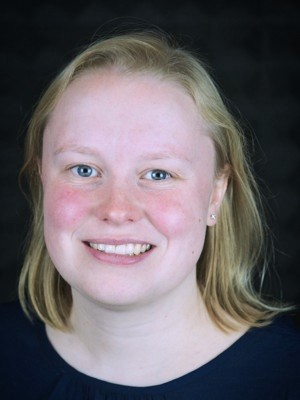 |
M. Sc. Patricia WeedeRoom B-AudiolabKaiserstraße 2, 24143 Kiel, Germany Phone: +49 431 880-6141 E-mail: ORCID: Google scholar: Link |
Research: Tremor analysis
A tremor of various parts of the body can occur as a symptom of different diseases. These include Parkinson's disease and essential tremor. Both belong to the most common neurological diseases. While Parkinson's disease has other symptoms such as slowed movements or rigid muscles, essential tremor is a description of the disease itself.
Differentiating between different diseases on the basis of the tremor has proven to be difficult. The tremor characteristics of different diseases overlap and cannot be clearly distinguished. Therefore, many misdiagnoses between different diseases occur. Based on a misdiagnosis, a therapeutic approach can lead to a degradation of the symptoms and the course of the disease.
An analysis of different characteristics and other features of different tremors should be used to increase the accuracy of diagnoses. For this purpose, different sensors, such as EMG or acceleraction sensors, are used to record the respective tremor. In addition, features are extracted that are processed using different machine learning algorithms.
Related topics:
- Pattern recognition
- Feature extraction
- Signal analysis
- Machine learning
Further interests:
- Real-time digital signal processing
- Movement analysis
- Adaptive filters
Short CV
| Time span | Details |
|---|---|
| 2019 - current | Research assistant at the Christian-Albrechts-Universität zu Kiel, Kiel, Germany |
| 2017 - 2019 | M.Sc. in Electrical and Information Engineering at the Christian-Albrechts-Universität zu Kiel, Kiel, Germany |
| 2012 - 2017 | B.Sc. in Electrical and Information Engineering at the HAW Hamburg, Hamburg, Germany |
| 2012 - 2015 | Electronics Technician for Equipment and Systems, Field: Medical Technical Equipment, apprenticeship, Philips Medical Systems, Hamburg, Germany |
Publications


K. Krüger, P. Piepjohn, G. Schmidt: A Real-time Objective Speech Analysis Tool for Analysis of Impaired Speech, Proc. DAGA, Germany, 2025


I. S. Schiller, K. Krüger, T. Lerg, P. Weede, G. Schmidt: Real-Time Voice Quality Alteration: Tackling the Complexity of Simulating Dysphonia, ICVPB 2024, Erlangen, Germany, 2024


P. Weede, P.D. Smietana, G. Kuhlenbäumer, G. Deuschl, G. Schmidt: Two-Stage Convolutional Neural Network for Classification of Movement Patterns in Tremor Patients, Information, vol. 15, no. 4, 2024, pp. 231. doi: https://doi.org/10.3390/info15040231


I. S. Schiller, K. Krüger, P. Weede, M. Sopha, G. Schmidt: Real-Time Modification of Voice Quality using VQ-Synth: Exploring Our Perception of Acoustic Voice Perturbations, Proc. DAGA, Hamburg, Germany, 2024


J. Winter, K. Krüger, P. Piepjohn, G. Schmidt: Objective Measures for Speech Evaluation, Biosignale Workshop, 2022, Dresden, Germany


P. Piepjohn, C. Bald, G. Kuhlenbäumer, J.S. Becktepe, G. Deuschl, G. Schmidt: Real-time classification of movement patterns of tremor patients, Biomedical Engineering / Biomedizinische Technik, vol. 67, no. 2, 2022, pp. 119-130. doi: https://doi.org/10.1515/bmt-2021-0140


P. Piepjohn, C. Bald, G. Kuhlenbäumer, G. Deuschl, G. Schmidt: Echtzeitklassifizierung von Bewegungsmustern von Tremorpatienten, Biosignale Workshop, 2020, Kiel, Germany


H. Falk, F. Hopfner, P. Wiegand, P. Piepjohn, G. Schmidt, G. Deuschl, G. Kuhlenbäumer: Sind Smartphones zur akzelerometrischen Messung von Tremores geeignet?, DGN Stuttgart, September 2019

 On behalf of the members of the Chair of Digital Signal Processing and System Theory, we would like to take this opportunity to wish you all a very Merry Christmas and a peaceful, restful winter break. We hope that this festive season brings you joy, relaxation, and cherished moments with your loved ones.
On behalf of the members of the Chair of Digital Signal Processing and System Theory, we would like to take this opportunity to wish you all a very Merry Christmas and a peaceful, restful winter break. We hope that this festive season brings you joy, relaxation, and cherished moments with your loved ones.